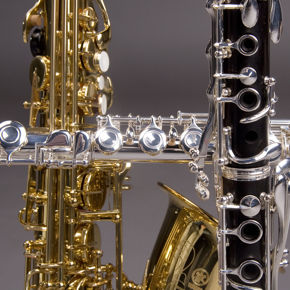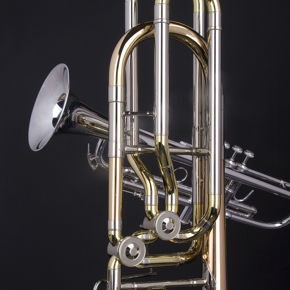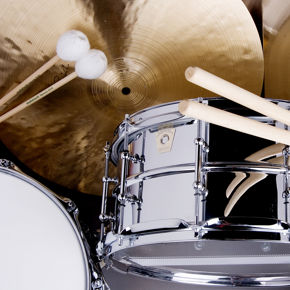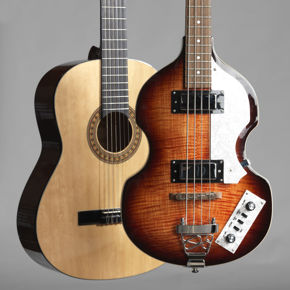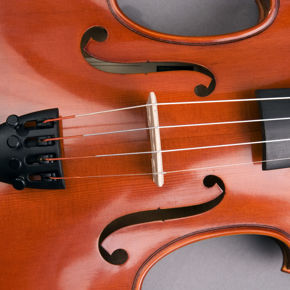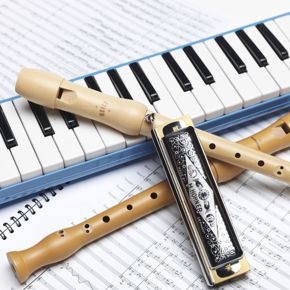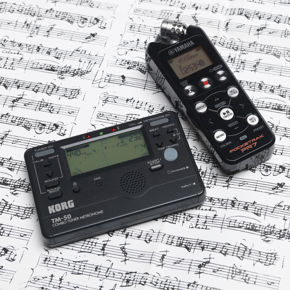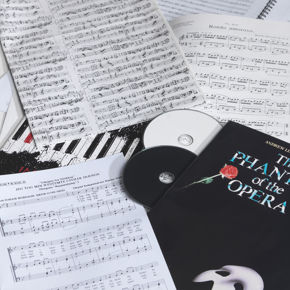Twelve advanced studies for Brass Soloists - plus Warm Up Exercises.
Includes a demonstration CD recording performed by Richard Marshall.
ESSENTIALS Brass Studies for the 21st. Century
This collection contains a number of advanced studies, designed to be technically challenging for advanced performers. Arranged in two suites of increasing difficulty, some of the etudes will be helpful for private development, but may also be useful for public performance. They may be performed on any valved brass instrument. The accompanying CD recording is performed on the cornet by Richard Marshall.
Throughout the collection, we have used a variety of contemporary musical techniques, and we hope to add our own contribution to the established canon of brass literature.
Richard Marshall, Philip Wilby. September2013
Suite One
This suite of four linked pieces requires the development of some technical prowess and may be useful for private study or for public performance. With its occasional jazz refrences, it is offered to David Horsfield as a 70th. birthday tribute, Without his enthusiastic support, our project would not have come to l/è.
Soliloquy
A pair of contrasting moods
The contrasting moods mentioned in the subtext need to be clearly defined, and not compromised by instrumental personalities. A fanfaric opening is followed by a lyrical movement, and both will benefit from extremes of sty]istic delivery. The fanfare is punctuated with helpful silences, and good use of breath control will benefit the performer. The final notes of the fanfare use low notes which require some alteration of jaw and tongue position. Take care not to exaggerate this. By contrast there is a very high passage in the Andante. The wise player will not choose too slow a tempo, but will aim at a sense of lilting freedom.
A Little Overture
This short introduction consists of a little sonata form, with two subjects, a development section, and a recapitulation. It is a test of poise and fluency, and seeks to generate a sense of excitement.
Dynamic contrasts are of the essence. Equally, the consistency and clarity of the passage-work will be more impressive than an over-rapid tempo. Evenness of articulation is important in such bars as 16-18, between single and double tonguing, and the extra length needed for the final accents. The second subject (at bar 19) should be played with space and chasm. Support the upward slurs well during this melody, and take care not to starve the staccato quavers of sound. Practice slowly, aiming at a final tempo of 152 crotchets per minute.
The title suggests the opening of a theatrical drama, and it is important that the piece has an attractive and beguiling sensibility. Your final ambition should be to avoid setting a tempo that will prove too fast for clarity of detail.
Cadenza and Groove:
There are some jazz influences here, requiring both valve glissandi and a strong rhythmic drive
Cadenza. The composer has written a range of glissandi in this passage, exploiting various dynamics and registers. Remember to fill the instrument with air when half-valving, which is essential for smooth transitions, A carefully thought-out approach to tonguing in sextuplet and quintuplet passages, mixing single double and triple tonguing is essential.
Groove
There are two musical sections in this study.
The main body of the music should be played in a be-bop style, with equal quaver rhythmic units, but a strong emphasis on the length of notes. Note carefully the composers use of dots, lines, and accents in combination with a range of contrasting dynamics.
The second musical section involves a change of musical psychology. Within a few bars (69-85), the music requires both flutter tongue and tremulando techniques. Developing a good flutter tongue over the middle range of the instrument will be a valuable asset, and bars 77/78 will be facilitated by keeping the flutter tongue in motion between notes. Note that double-handed tremulandi are demanded between bars 80-83.
Ballad:
For the development of beautiful sound and musical con trol
This is a very atmospheric étude. The subdivision of the pulse ebbs and flows, and a successful performance will sound naturally fluid. The important words here are Time and Space.
Chasing Echoes:
An exercise in graded 4ynamics
This has become a personal favourite of many, and exploits extremes of playing style within limited technical demands. Beware of intonation problems when using a tin mute. Dynamically, the music needs to jump from the page. Exaggerate, and play what you see.
Suite Two
For Richard Marshall
ho has observed that on/y he would be rash enough to commit these to a recording!)
This second suite carries the title Concert Studies and thus bears greater expectations of personal interpretation than Suite One, Like the piano studies of Chopin, Liszt, or Ligeti, these pieces are designed to be pieces of public music, to suit players at the summit of their prowess.
Prelude and Vivace:
Prelude. Compositionally, the heraldic style of the opening gives way to phrases which become higher and longer, and require increasing breadth of expression. One particular test i.s the diminuendo in the opening phrase, needing support and a gradual decay of sound. An essential ingredient is interpretation; this must be presented on your terms, and must create a unique and personal atmosphere. A tip to the performer . . allow space at the end of this movement to prepare for a change of mind set before the next study.
Vivace. For fluent and rapid passagework. There are two principal problems. First comes persistent syncopation, sometimes written with dots, and sometimes with lines, depending on dynamic context. The second are some awkward passages of rapid lip slurs (see bars 35, 52, 64). A possible practice routine is to eliminate one note from each group in turn, until the ear and brain see clearly the patterns involved. Tonguing of these various passages is important. Allow the air to flow continuously.
Ghosts:
Dramatic gestures combined with intervallic flexibiliiy
This study has a very contemporary flavour, and uses a lot of chromatic intervals, In common with much music of this type, there are few octaves, and slow interval practice will lead to success. As the title suggests, it should be approached with dramatic flair, and with clear dynamic separation between the text (loud) and sub- text (using various very soft dynamics). Be a brave soul!
Butterifies:
A study to develop ease in double tonguing
rapidity of this étude push it to the edge of impossibility. the music becomes more complex in its detail as it progresses, to let the tempo get out of hand. Aim at a gentle form of doubleDa Ga syllable. A half-open adjustable cup mute will be ideal,
and catch the idea of a fluttering insect perfectly. Note that there is an uninterrupted soft dynamic and no metronome mark, so your final challenge must be to paint a vivid picture in the listeners mind.
Night Dreams:
A study using expressive valve tremulandi
Interpretations may vary with this short piece. The expressive nature of the tremulandi, and the downward winding phrases suggest a lethargic dreamlike state. Various types of practice mute are available, but take care to produce good intonation. Tremulandi should not be too fast, but be used as a form of enhancement to good quality straight tone.
Fugato :
Which counterpoints foreground and background material using vivid 4ynamic contrasts
Compositionally, this has the traditional features of a fugue, where the subject (and subsequent entries in stretto) are played loudly, and are set against a running web of soft triplets. The metronome mark suggests a rapid triple tongue, and it is important to see this movement as a summit for the whole suite. Some of the linking passages (bars 18, 28, 48) are very rapid indeed, and demand slow practice and a light tongue to achieve real fluency. Remember that slow practice still needs strong contrasts of dynamic. There is no substitute for following the written text faithfully.
Finally, this is vivid music, and needs as much raw courage as it needs self-control.

